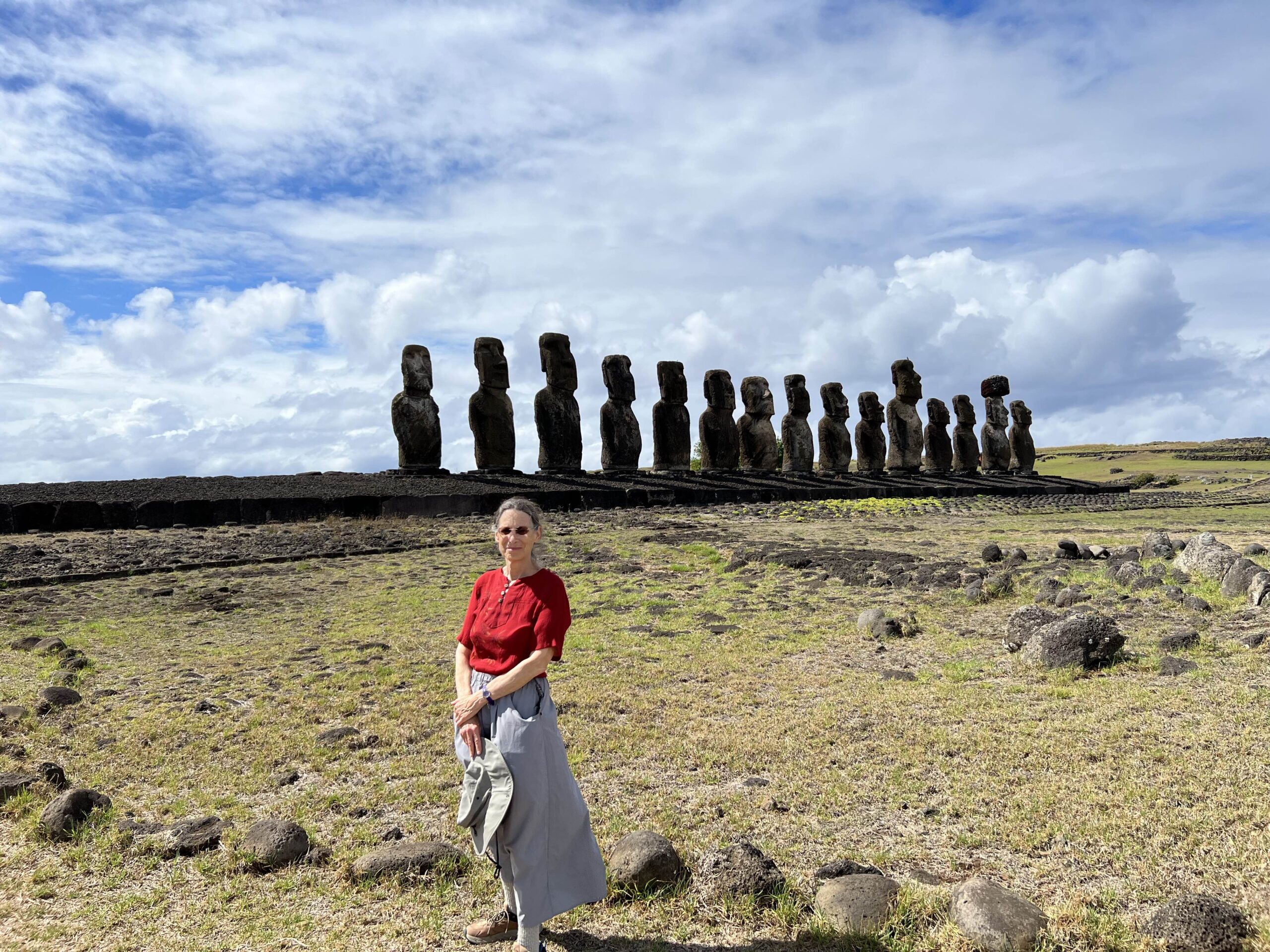I wake up to a rooster’s loud crow on this remote island, 2200 miles have from its nearest neighbor of Chile. There are more wild chickens and horses here than local people. There is one main town, Hanga Roa, without a traffic light on the island. But what makes it astounding, and brings the visitors here are the immense stone Moai statues that are scattered along the coastlines and inland at the quarries that provided the black basalt, grey tuss and red volcanic rock from which these large images were carved a very long time ago. There are said to be a 1000 of these monoliths scattered here, many on their backs, either toppled by time and mankind or never removed from their creation site.
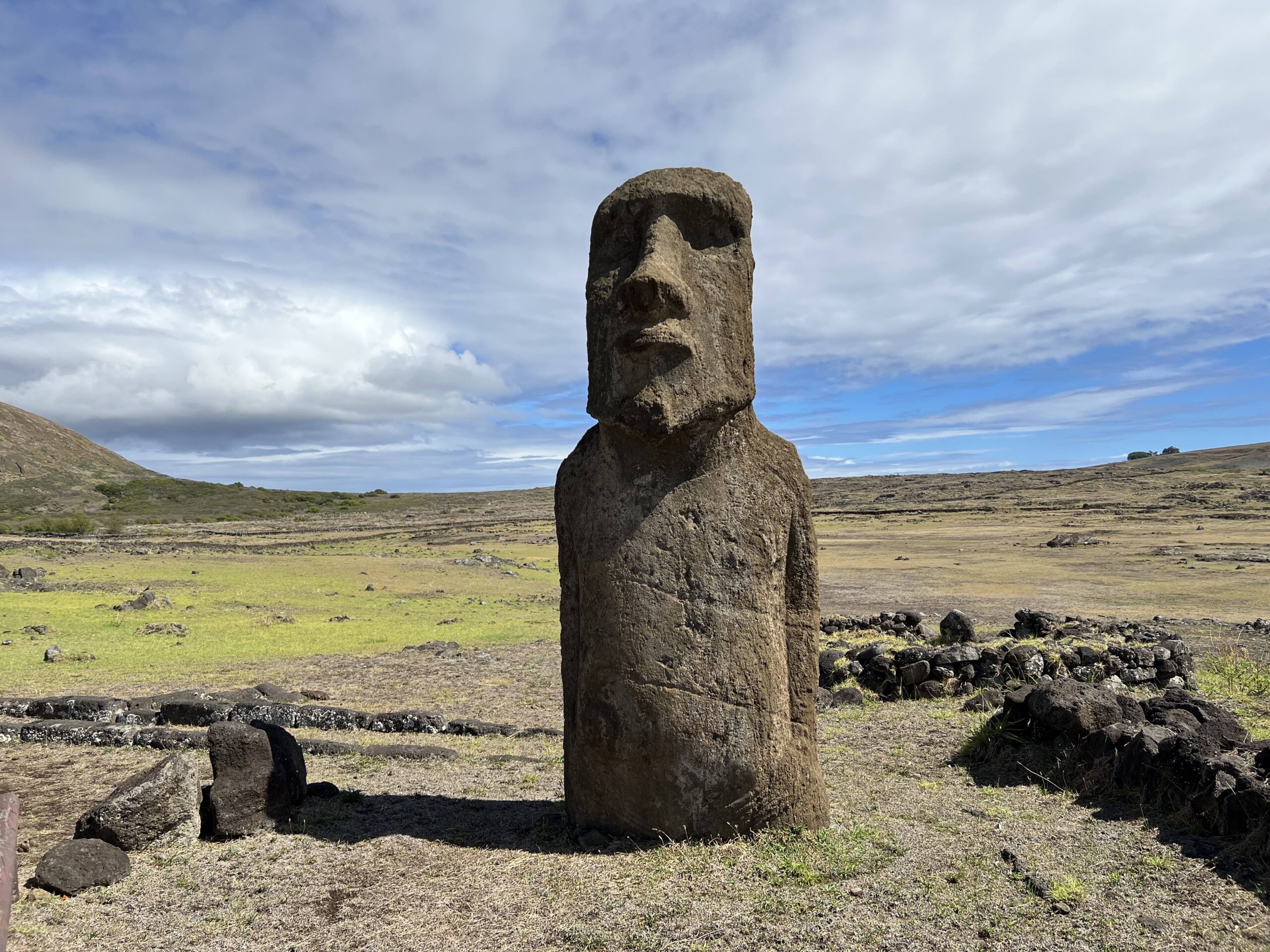
I flew into Rapa Nui from Santiago a few days ago together with my friend Jack and both our rooms at the Takarua Lodge face some of the most iconic of the Moai at the ancient Tahai site, each facing inland to protect us from the sea. Our view last night at sunset
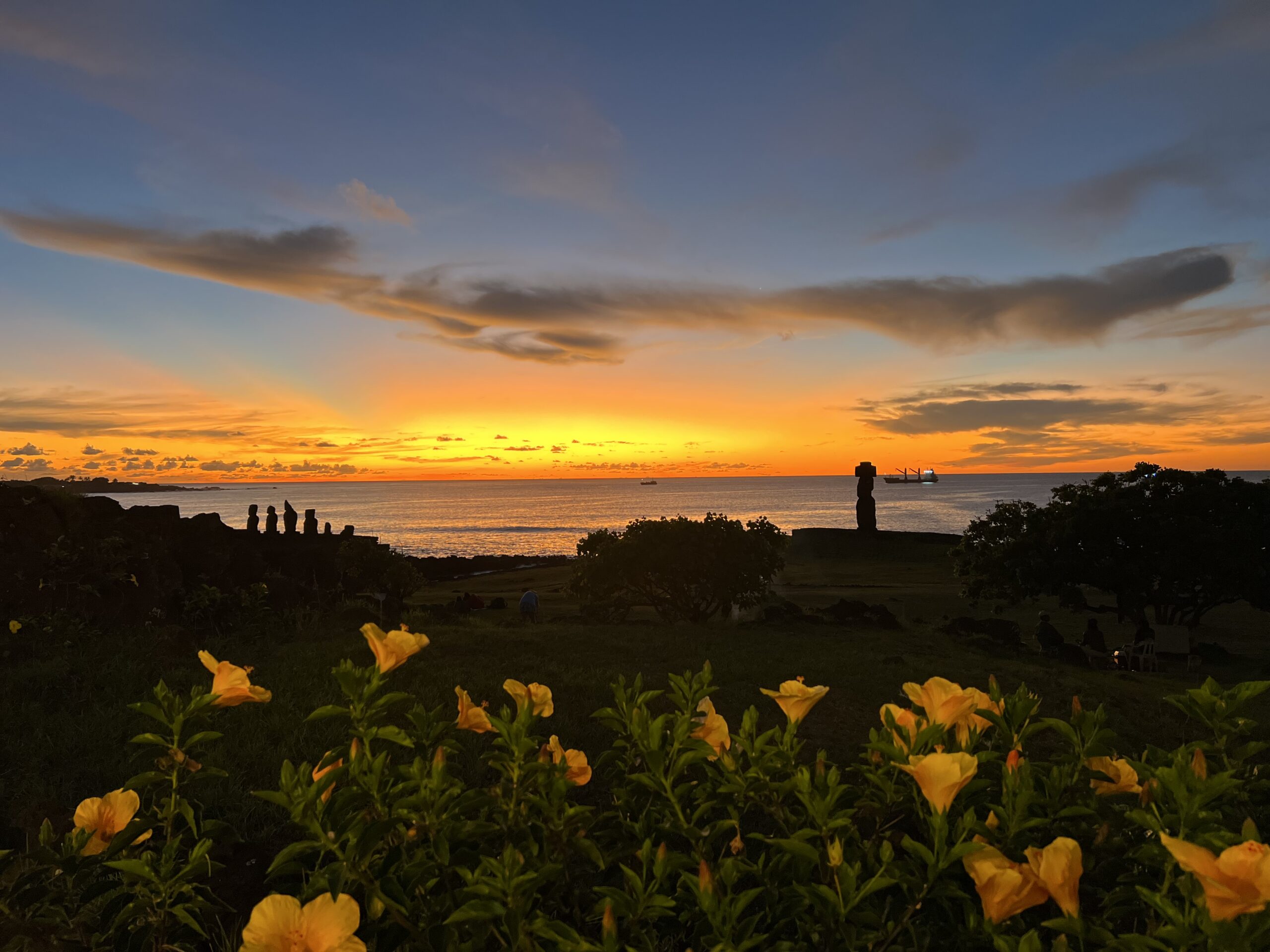
During our 2 full days of sightseeing tours into the National Parks we heard very different versions from our two guides about the islands history. And today on a more private tour through the very upscale Explora Lodge we heard yet another version of the creation and destruction of these sacred images of the ancestors. The conclusion is that it all remains a mystery, who and when the Moai were built and who or what toppled them, all currently standing statues being reconstructed with the help of American and Japanese archeologists.
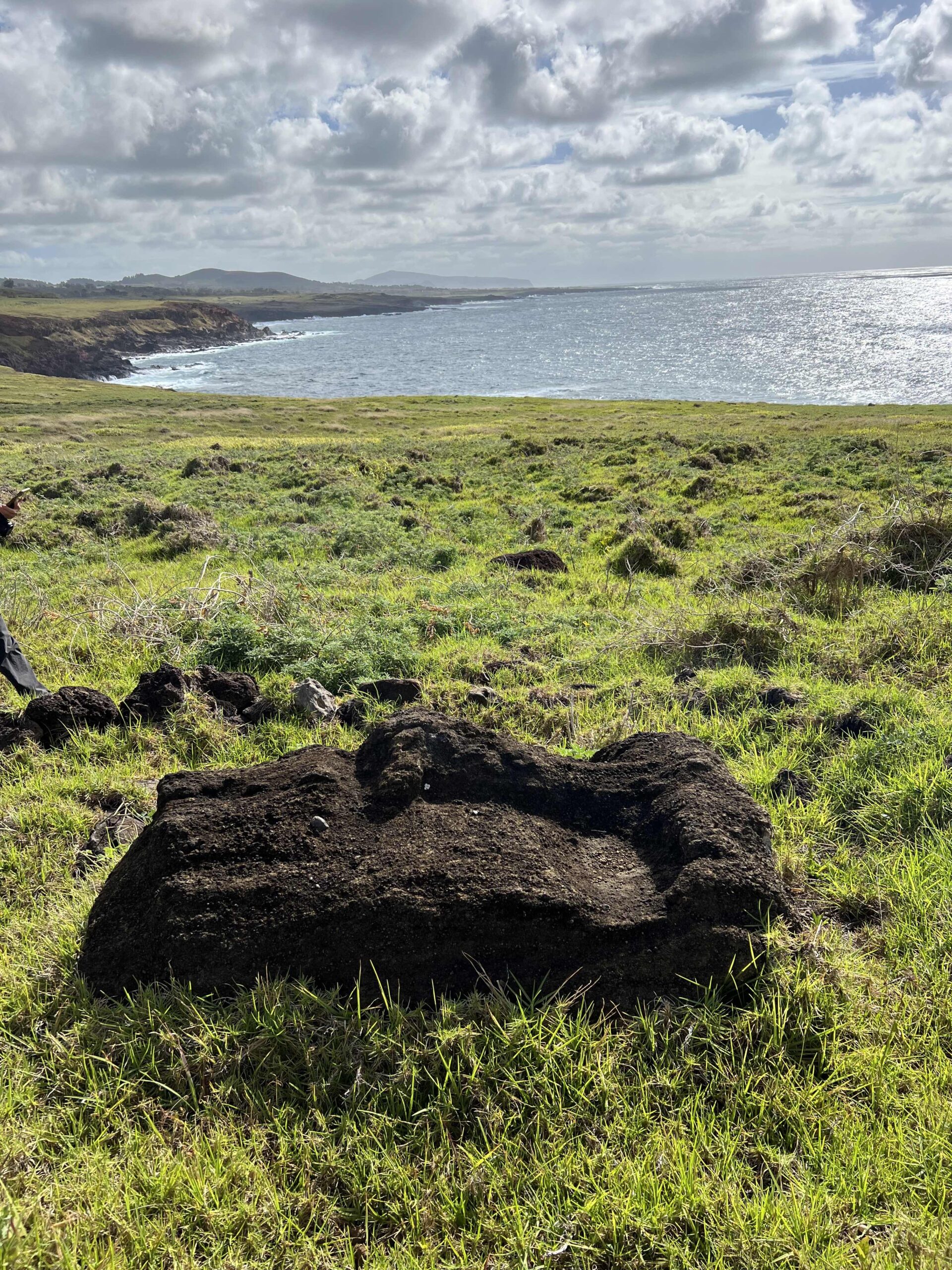
Easter Island was completely isolated from the rest of the world during the first 2.5 years of COVID and we heard that without tourist income the local people went back to traditional agriculture to survive. But they still held for themselves their annual Tapati festival which includes various competitions in sport including dance. And since opening last August, next week is their first Tapati festival with outside guests.
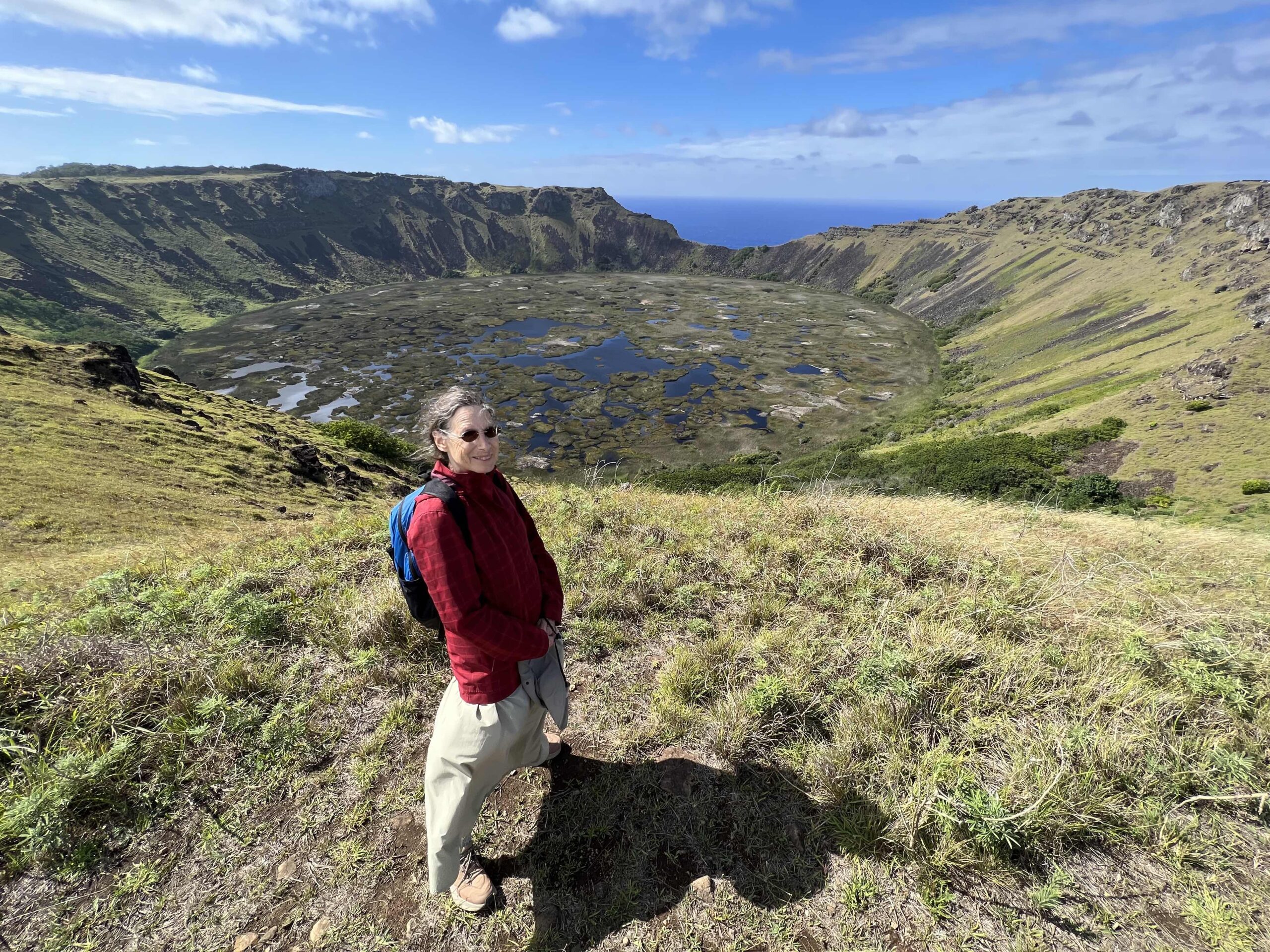
Although I have seen many large sculptures here and reminders of its ancient Polynesian civilization, the most intense and wonderful experience was watching the children practice for the Tapati dance competition. Jack and I went to two different school auditoriums where woman teachers on the stage with live all male musicians and singers were teaching song and dance to large groups of children, from very small to teenagers, all moving with incredible fluidity and grace. It was incredibly stirring to see an ancient art being brought forward to the next generations with this voluntary after school training, every day, by both girls and boys, the male form of the dance being different from the female. I went back the next evening and watched the adult women practising, filling the large gymnasium with syncopated song and dance.
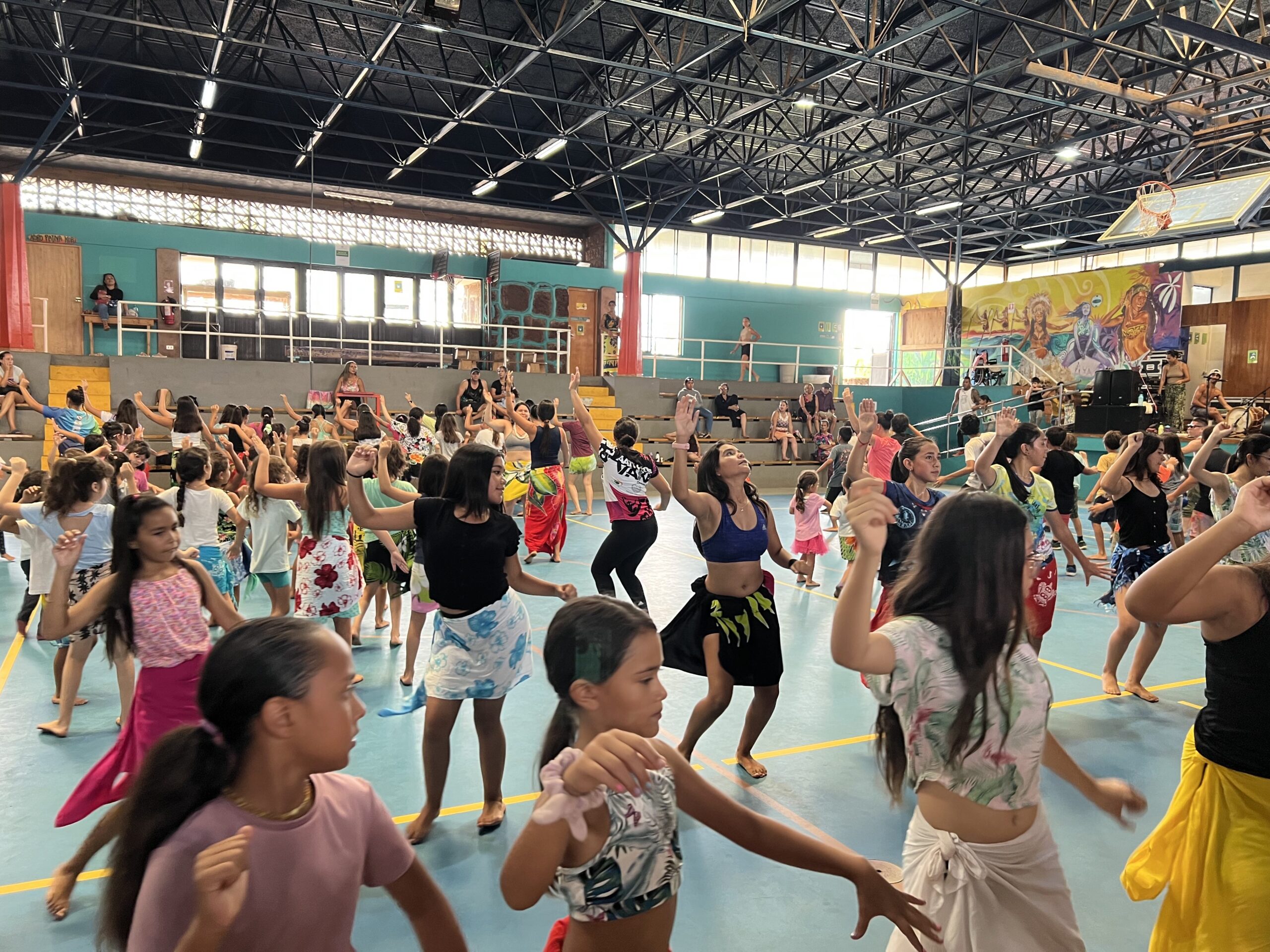

The music sounds similar to Hawaiian traditional music and it is not limited to this special festival but I hear it from people’s radios and cars and on the street, in the small grocery stores and crafts markets, clothing stores and my favorite place, the home-made heladeria (ice cream store) by the pier where sea turtle swim and young boys play every afternoon on the mooring ropes.

It has rained a number of times since our arrival, heavy but warm tropical rain, but we were told global warming has reduced their water availability and water has to be delivered as there is no aquifer in this volcanic rock.
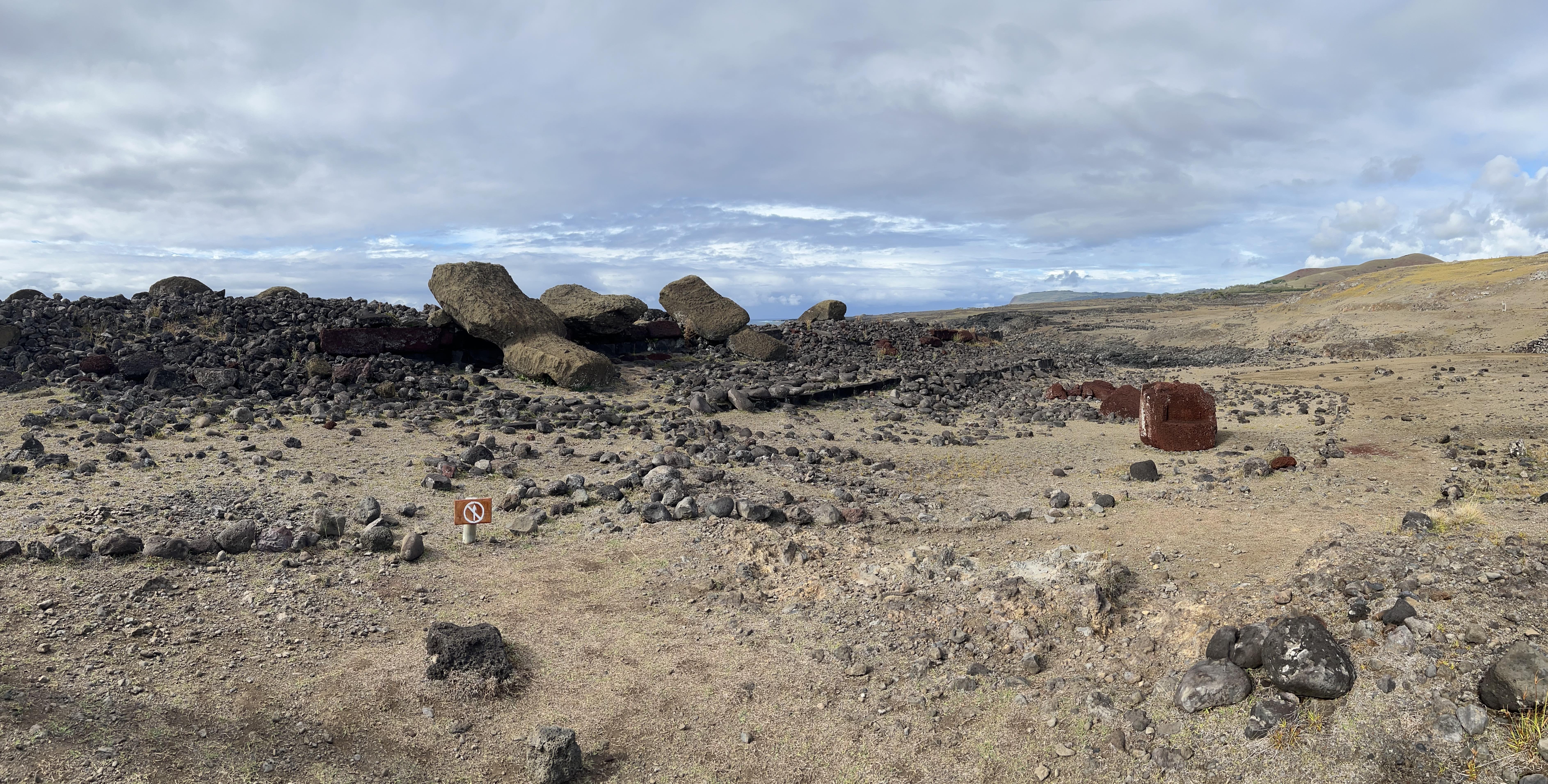
We have had some excellent, and expensive, food as so much produce and necessities need to be flown in from the mainland of Chile, its country of citizenship.
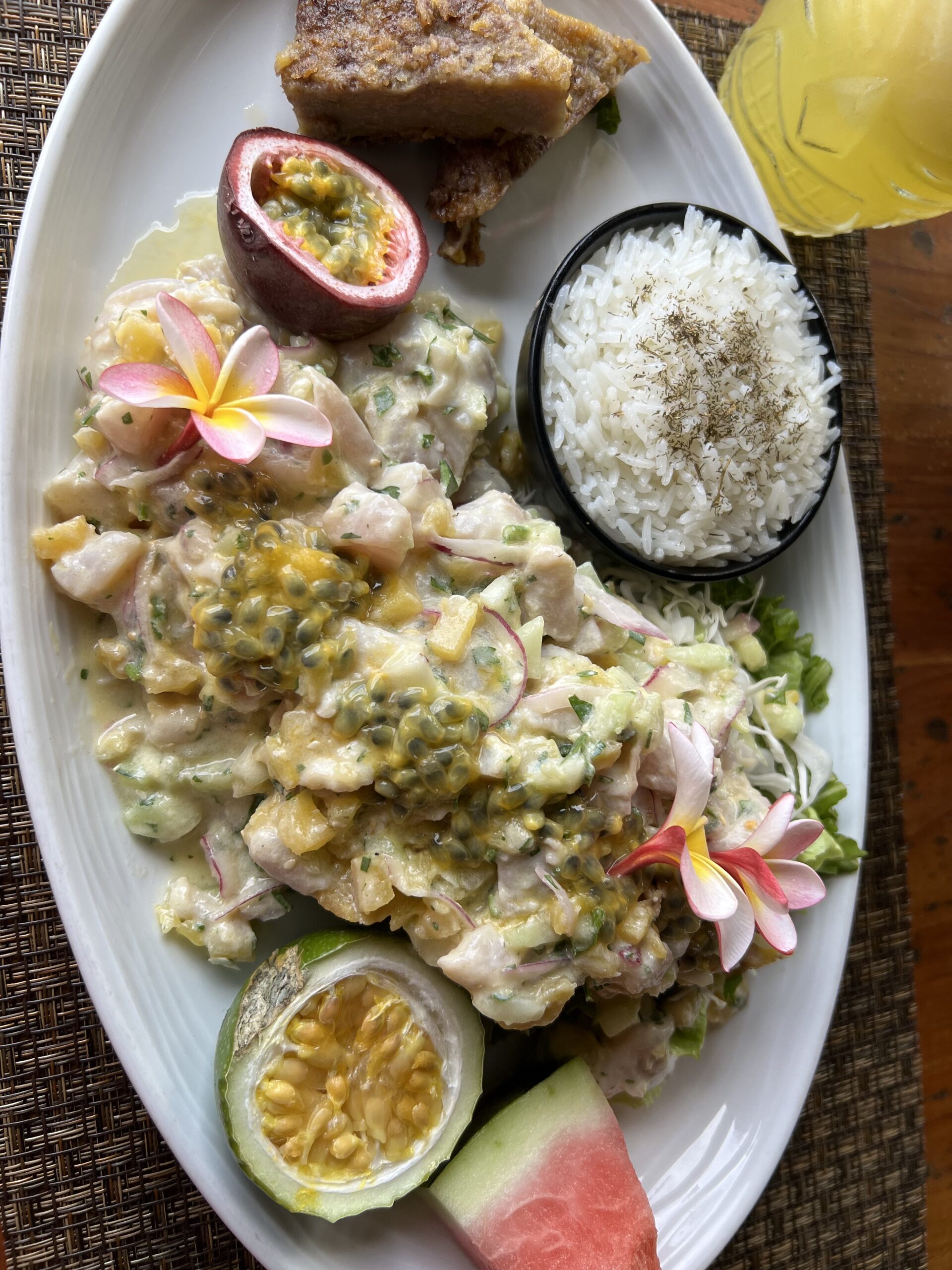
It has been a good beginning to this South American journey to be in a quiet place to rest and relax for 4 days before returning to urban chaos in Santiago and then joining the rest of our group in Buenos Aires.
